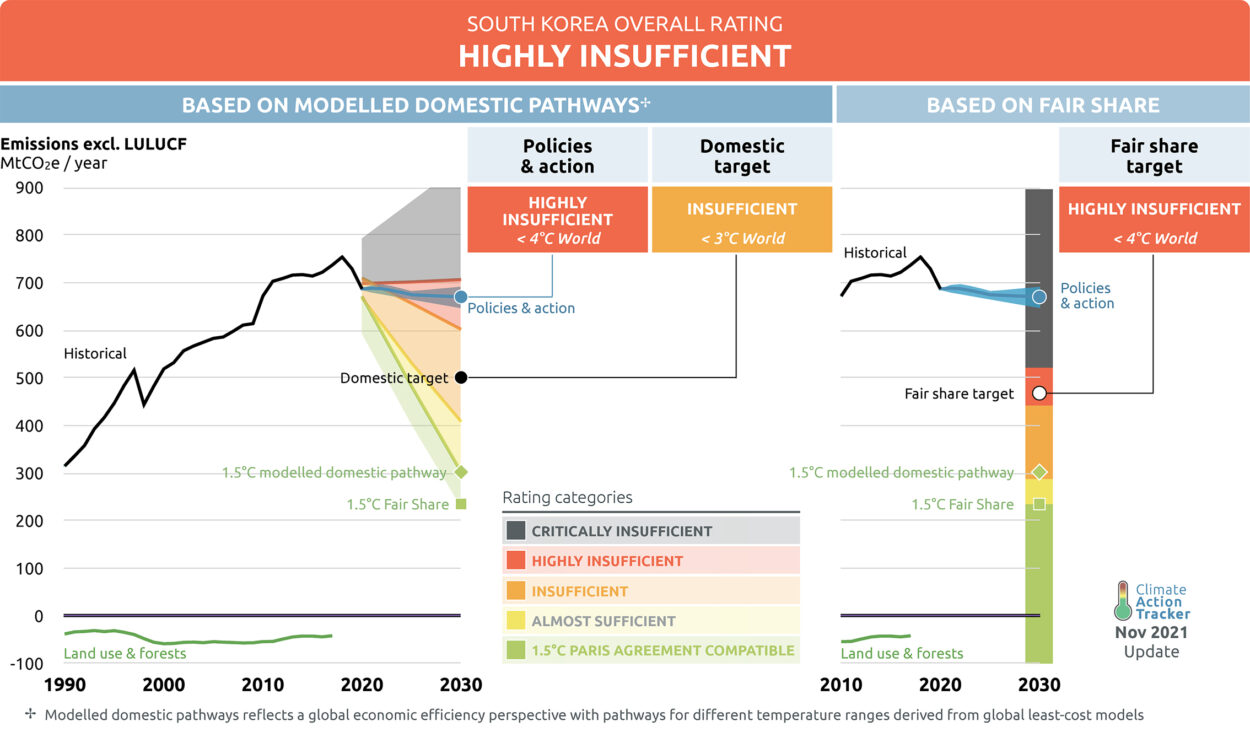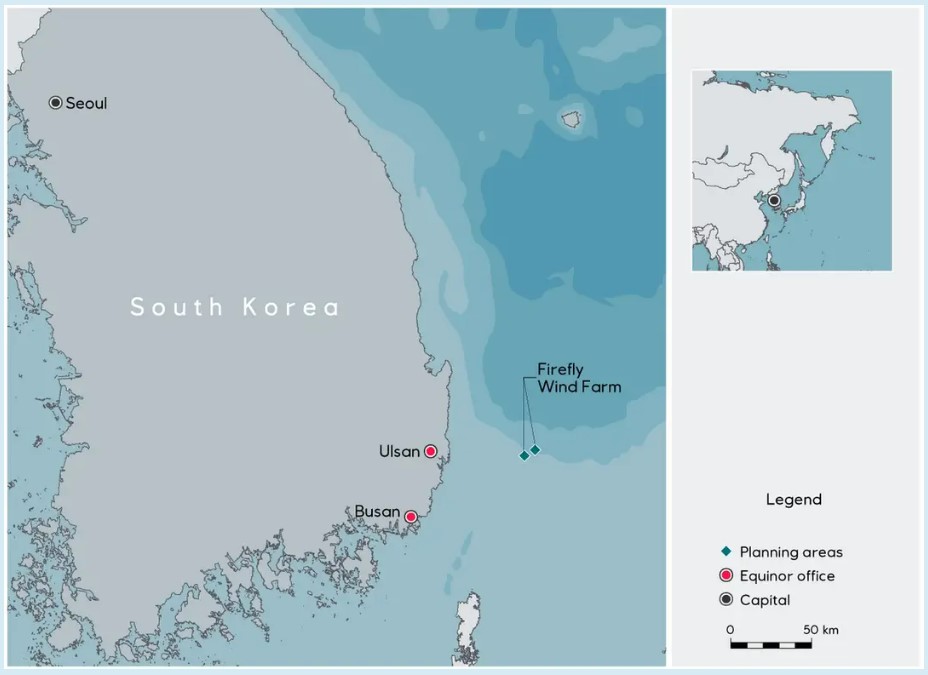Offshore wind power in South Korea

South Korea has accepted a legal obligation to become climate neutral by 2050. That represents a major commitment, given that it has the world’s ninth-highest greenhouse gas (GHG) emissions. The amount of GHGs released by the country has risen hugely since 1990.[REMOVE]Fotnote: https://climateactiontracker.org/countries/south-korea/. Industrialisation has had a drastic impact on its natural environment. In recent years, so much woodland has been cleared that the original forested areas are almost gone. Other environmental problems include acid precipitation, overfishing and water pollution from factory discharges. Air quality is also poor in the biggest cities.

To produce more environment-friendly energy and reduce GHG emissions, South Korea is committed to a fundamental shift in supply from nuclear power and coal to renewables. The share of the latter in the country’s electricity output is predicted to increase to 20 per cent by 2030 through an expansion in solar and wind power.
Wind farm project
Equinor has wanted to seize that opportunity, and signed a letter of intent in 2019 with the Korea National Oil Corporation (KNOC) on a joint investigation of commercial opportunities for offshore wind power in the country. Wholly state-owned, KNOC had established a new company to develop floating wind turbines where – like Equinor – it wanted to build on experience from offshore petroleum developments.

Equinor’s division for new energy solutions could then point to being the operator of the world’s first full-scale floating wind farm, which was being planned off the UK. The company was also engaged in developing large fixed wind power projects offshore Britain, Germany, Poland and the USA.
As early as the autumn of 2019, planning for a 200-megawatt floating wind farm was being pursued by a consortium comprising Equinor, KNOC and Korea East-West Power (EWP). That facility would be located close to the Donghae natural gas field operated by KNOC about 70 kilometres off the port of Ulsan.[REMOVE]Fotnote: Equinor press release, 15 February 2019, “KNOC og Equinor inngår intensjonsavtale om flytende havvind”.
This was an important project for Equinor. “Our aim is to be a global major in offshore wind power, and we see a big potential here in South Korea, which we regard as an important market for floating wind power,” country manager Jacques Etienne Michel said in 2020.[REMOVE]Fotnote: Equinor press release, 29 June 2020.
The first phase of the project has involved wind and wave measurements in the designated area, which has been named the Firefly Wind Farm. It covers an area of two by 75 square kilometres, and is considered to have a total potential of about 800 megawatts.[REMOVE]Fotnote: Equinor press release, 11 July 2019, “Flytende havvindprosjekt i Sør-Korea”. An environmental impact assessment was initiated in 2022.[REMOVE]Fotnote: https://www.equinor.com/no/what-we-do/fireflywind.html, accessed 7 April 2022.
The future
Floating wind turbines intended to stand in the Tampen area of Norway’s North Sea sector are due to be manufactured in 2022. Equinor has long used South Korean fabricators to produce offshore petroleum facilities. Now Norway may become a supplier of floating turbines in the other direction. Given South Korea’s history as a builder of ships and oil platforms, however, it is perhaps even more likely that the traditional direction of delivery will persist.
arrow_backAasta Hansteen – small discovery with big pipelineDeveloping Johan Sverdruparrow_forward